Repetitive Strain Injuries (RSI)
Although our bodies are robust and meant to be able to withstand high amounts of movement and impact, sometimes our nerves, muscles, joints and tendons feel the strain of pushing our bodies to the limit.
Other than acute injuries and more serious injuries, we can also injure ourselves by simply overloading or overworking our bodies.
Overworking refers to demanding too much from our muscles and tendons by consistently and frequently putting them in unnatural or non-ergonomic positions that can strain our muscles and tendons.
In some cases, this can result in developing a repetitive strain injury that can be quite painful and get in the way of doing everyday tasks and activities.
Please take a look at our respective Knee Supports and Wrist Supports sections for supports and braces that can help with pain relief and recovery. Some of them are conveniently named such as the Carpal Tunnel Wrist Support

What is repetitive strain injury?
Repetitive Strain Injury is a term used to describe a range of different conditions that are caused by repetitive movements and overuse of your muscles and tendons in your wrists, hands, forearms, neck, shoulders and elbows. These injuries are infamous for being the most common causes of pain and discomfort.
What are the most common conditions classed as a Repetitive Strain Injury?
N.B. Please don't attempt to self-diagnose yourself, you should always seek qualified medical guidance if you believe you have developed a medical condition/injury.
The following conditions and injuries can be classified as RSI:
- Achilles tendonitis
- Carpal Tunnel
- Tennis Elbow (Lateral Epicondylitis)
- De Quervains' Syndrome
- Tendonitis/Tendinitis
- Neck and Shoulder Pain
- Tenosynovitis
- Bursitis
This is not a complete list, there are other forms of RSI, these are just the ones we'll be focussing on in this guide
What are the symptoms of a Repetitive Strain Injury?
There are a few signs and symptoms you might have RSI, including:
- Pain or stiffness
- Tenderness
- Weakness or numbness
- Cramps or throbbing

Due to the range of the symptoms listed above, it is easy to misdiagnose RSI as something else and vice-versa. For example - Arthritis, sprains or virtually any condition that has pain and a few other possible symptoms as indicators.
This is why it is important that even if you think you have developed a Repetitive Strain Injury as a result of overworking then you shouldn't attempt to diagnose yourself and rather try to consult a physician or proper, qualified medical guidance.
It would be easier to identify the part of your body that is hurting and then look at the symptoms for specific Repetitive Strain Injuries in that part of the body, for example, if you have pain in your wrist then this could be Carpal Tunnel Syndrome.
Unlike the general list of symptoms for RSI, Carpal Tunnel has fewer signs and symptoms and can usually be identified if there is numbness and tingling in the wrist, obviously you might have other symptoms like pain or weakness but the most dominant or uncommon symptoms are usually the most indicative.
Wrist conditions can however be particularly confusing so it is always in your best interest to consult a medical professional. If you are looking for information and guidance on how to treat RSI and acute injuries then please take a look at our Wrist Support and Knee Support Buyers Guides.
N.B. Please don't attempt to self-diagnose yourself, you should always seek qualified medical guidance if you believe you have developed a medical condition/injury. This information is intended to be used to make better informed decisions about products, it does not substitute proper medical advise.
Tendonitis/Tendinitis and Tenosynovitis
Although these are two different types of repetitive strain injuries, they are often mistaken for each other but it is important to make the distinction between the two before we start discussing the different types of Repetitive Strain Injuries because most of them are usually classified as one or other.
This is of course not the case for repetitive strain injuries that don't involve the tendons, such as Carpal Tunnel syndrome which is caused as a result of a trapped nerve.
You are more likely to develop repetitive strain injuries in parts of your body where you use the muscles and joints quite a lot such as your wrist, knee, elbow, hips and shoulders. Other conditions like heel bursitis aren't uncommon but we're only going to focus the main types of RSI in this article
This is why tendonitis and tenosynovitis can describe any tendon damage or inflammation but there are loads of different repetitive strain injuries, this is probably the reason why most common repetitive strain injuries are given their own term to describe them which makes it easier to classify them and identify specific signs and symptoms.

Tendonitis is when a tendon is inflamed or irritated and can happen to any of the many tendons in your body, which you have a lot of because their purpose is connecting muscles and bones to allow movement, this doesn't always involve bones though, for example, your eyeball has a tendon connected to it.
Tenosynovitis, on the other hand, is the inflammation of the synovium, this is a fluid-filled sheath that protects the tendon. It does still share similar causes and symptoms but tenosynovitis can include the inflammation of both the sheath and the tendon so it has the potential to be a lot more inflamed and painful.
It is possible for Tenosynovitis to be infectious or non-infectious, an infectious tendon and sheath are more common in the wrist, fingers and hand. Although infectious tenosynovitis can be a huge cause for concern, your doctor can easily treat it with surgical drainage and antibiotics.
Unlike Tendonitis, tenosynovitis can be caused as a direct result of psoriasis arthritis and rheumatoid arthritis.
Arthritis, as you may already know, involves the inflammation of the joint so it is no surprise that tendons can get damaged but the damage is usually to the synovium rather than the whole tendon.
This can therefore lead to severe pain that heavily restricts movement but with proper treatment and management in order to mitigate the pain and prevent further damage to the synovium, some pain relief and better mobility can be possible.
It is already hard to distinguish tendon pain and repetitive strain injuries from arthritis so this complicates things further and for people that it may affect, it amplifies the pain significantly when arthritis causes tenosynovitis.
Arthritis supports can help to support your joints and provide some pain relief but as mentioned earlier, proper treatment and management is needed to fully protect the joints and from further damage
We have guides on keeping active with arthritis and Arthritis management - the keeping active with arthritis guide covers most forms of arthritis but the arthritis management guide is more for Osteoarthritis.

Achilles Tendonitis
Although this might sound like a complicated medical term, it is an ode to the Greek mythological character Achilles. Achilles is known as the greatest Greek warrior and the hero of the Trojan War but you may be more familiar with the famous phrase, "Achilles Heel".
We won't get into the mythology for the sake of relevance but basically, an Achilles Heel is a weakness, originally a physical weakness but it has become a universal phrase to describe a very vulnerable weakness that contrasts with overall strength.
Achilles Tendonitis refers to an overuse repetitive strain injury affecting the band of tissue connecting your calves to your heels so it is essentially Tendonitis of the Achilles Tendon, the largest tendon in your body.
We probably still haven't addressed the actual condition yet; Achilles Tendonitis refers to the inflammation of the Achilles tendon. This can happen as a result of a number of reasons but they all relate to overuse or damage to the tendon.
The fact that walking, running, jumping and supporting our body weight all rely on the Achilles tendon can make this condition quite painful and irritating.
There is a range of Achilles tendon injuries, ranging from Achilles tendinosis to Achilles tendinitis and a ruptured Achilles tendon so it is paramount that you don't attempt to self-diagnose yourself as mentioned earlier.
You could think you have Achilles tendonitis and proceed to treat it thinking pain relief has helped to heal it, go on to do strengthening exercises and realise you actually have ruptured Achilles.
The chances are you'd realise long before you get to the strengthening part if you had a rupture but the point is that if you have a minor injury then you could make it worse and if you have a severe injury, you could damage it to the point that you will definitely need surgery because some cases already require surgery.

Carpal Tunnel Syndrome
Carpal Tunnel Syndrome is caused as a result of pressure on your median nerve and is therefore also known as median nerve compression. The nerve becomes trapped or 'pinched' by surrounding tissues and this is what causes the numbness and tingling feeling in your fingers.
Carpal Tunnel Syndrome is becoming increasingly common with more and more people reporting symptoms related to the condition.
This is due to lifestyle and ergonomics choices and issues, one of the main causes responsible for this is overuse or improper use of computers. As you can imagine, sitting at a desk for hours on end doing work or playing video games will result in loads of repetitive use of the wrist.
In some cases where this happens frequently and for prolonged periods of time - the median nerve can get trapped and you subsequently develop Carpal Tunnel.
As mentioned earlier, unlike other repetitive strain injuries, Carpal Tunnel is not tendon damage so it is not tendonitis or tenosynovitis. Although Carpal Tunnel Syndrome is not as difficult to identify as other conditions such as Achilles Tendonitis, it can be quite difficult to treat and address sometimes.
This is especially the case if the risk factors or causes are still present while there is an attempt to decompress the median nerve through corrective positions, exercises and effective support.
So essentially if you got Carpal Tunnel from playing loads of video games and you try to treat it while still playing video games with the same frequency and don't rest your wrist then it will take a very long time to actually address the issue.
One of the key parts of the RICE and PRICE principles is Rest which in this case is very important. These principles were used in first aid and sports first aid as a guideline for musculoskeletal injuries but they have since been updated with a more encompassing acronym, the POLICE principle.
One of the main criticisms was complete rest does not consider Optimal Loading which supports the notion that in order to heal, some loading (weight or support) can actually help you to recover quicker.
So yes, you can still play video games or if you are dying to get back to work then go ahead but use corrective positions, proper support and try not to overdo it by listening to your body

Tennis Elbow (Lateral Epicondylitis)
Tennis Elbow is the name used to describe Lateral Epicondylitis. Although it is referred to as tennis elbow, it actually affects the extensor tendons which go from your Lateral epicondyle in your elbow to your extensor muscles in your forearm so a lot of the pain is typically concentrated in the upper part of the forearm.
Tennis elbow is the most common overuse condition affecting the elbow and as the name suggests, one of the causes is Tennis or other racquet sports. You can also develop tennis elbow from other sports such as Javelin and Discus.
Other activities heavily associated with elbow pain and repetitive strain injury include using hand or gardening tools and tools for construction such as one used in painting, plumbing or laying bricks.
As is the case with most overuse injuries and RSI, the root cause is the muscles develop tiny tears and get inflamed as a result of strain and before your elbow can get a chance to heal, you will notice symptoms of Lateral Epicondylitis.
Tennis elbow isn't strictly a repetitive strain injury, you can also get it from hitting the forearm of the elbow because if enough damage is done, this can result in a tear or tears in the muscles.
Be careful to not confuse your Lateral Epicondylitis with Medial Epicondylitis, although they are very similar and affect the same area they are quite different and misidentification can result in using the wrong treatment or support.
Medial Epicondylitis is the less common elbow overuse injury, this repetitive strain injury is also known as Golfer's elbow because people who play Golf are very likely to develop it due to the nature of Golf swings and how you hold your clubs.
There is only a slight difference between the two - Tennis elbow and Golfer's elbow both have inflammation as a sign but Golfer's elbow is on the end of the inner elbow whereas Tennis elbow is on the end of the inner elbow.
So if you have tennis elbow, the pain will be felt in the forearm and this won't be present or nearly as bad if you have Medial epicondylitis. Please read our Tennis elbow vs Golfer's elbow buyers guide for more information.

De Quervains' Syndrome
Fritz de Quervain was a swiss surgeon, he was well known as an authority on thyroid conditions and has a thyroid condition named after him as well, he also introduced iodized table salt which helps prevent goitre (thyroid gland condition).
He first described tenosynovitis in 1895 by identifying distinct signs, symptoms and the affected tendons and it has since been known as a specific condition, distinguishable from other forms of tenosynovitis.
De Quervain's syndrome is also known as de Quervain's tenosynovitis, as mentioned earlier on, tenosynovitis is the inflammation of the synovium (a sheath surrounding the tendon).
This form of tenosynovitis occurs in the wrist and involves two tendons, the sheaths of these tendons become inflamed, numbness and pain can be felt on the thumb side of your wrist. The signs and symptoms are most noticeable when you are trying to make a fist or when you are using the mobility of your wrist.
Unfortunately, tendonitis in the wrist can sometimes be confused with De Quervains' Syndrome. This is especially the case for instances where the tendonitis is in the same tendons as De Quervain's tenosynovitis because it is hard to tell whether the sheath of the tendon or the actual tendon is inflamed.
Another complication with diagnosing this condition is carpal tunnel, carpal tunnel is already misdiagnosed as tendonitis and vice versa. This is because the symptoms are very similar; so similar that tendinitis is misdiagnosed as carpal tunnel 80% of the time by doctors.
Luckily de Quervain's only affects the thumb tendons and there is more numbness in the fingers compared to carpal tunnel; which doesn't affect the side of the wrist opposite the thumb so tendonitis in the wrist and tenosynovitis in the wrist are actually more similar in terms of symptoms.
Regardless, the signs and symptoms are easy to identify but not so easy to classify and the pre-existing notion that each of us is different so our bodies react differently only further complicates things.
Therefore, as stressed earlier, this discussion is for information purposes only and self-diagnosis is never a good idea with repetitive strain injuries so although we know we already talked about misdiagnosis - it is still paramount that you see a trained medical professional if you believe you have any signs or symptoms.

Bursitis
The bursa is similar to a tendon sheath, it is essentially a sac filled with fluids and it helps to protect tissues by allowing them to move freely around the sac and cushioning them as well. The most important bursae in your body near the most vital joints; the knees, hips, shoulders and elbows.
Bursitis would refer to the inflammation of the bursae around these joints and this is caused as a direct result of overuse of your joints such as playing sports or simply with age.
Although bursitis can affect any bursae in the body, it is more likely to affect the vital joints mentioned earlier and the most common forms of bursitis affect the Achilles tendon, Hips and elbows.
Bursitis in the Achilles tendon actually has two common conditions -Retromalleolar bursitis and Posterior Achilles bursitis which means it can be quite difficult to identify although there are some distinct signs and symptoms for posterior Achilles tendon bursitis.
You've probably noticed a bit of a theme by now if you have read through this whole discussion but to clarify sentiments from the other conditions covered, please don't assume that because you have pain or inflammation in the body parts mentioned that this must be the condition you have.
The Achilles tendon has other receptive strain injuries already covered in this article such as Achilles tendonitis and this itself has its own complications with diagnosis. We highlighted that it can be confused with two other very similar conditions and similarly, elbow bursitis shares signs and symptoms with Tennis elbow and other repetitive strain injuries
The only extremely common form of bursitis that isn't commonly misdiagnosed is hip bursitis because there are not a lot of other repetitive strain injuries that affect the hips.

Neck and Shoulder RSI
Pain in the neck and shoulders is arguably the most common form of repetitive strain injury, especially considering that a lot of cases don't quite reach the point of injury so there are a lot of cases of overuse or misuse of the neck and shoulders that don't get properly addressed as the pain is not yet severe enough to prompt seeking treatment.
Although most repetitive strain injuries are also commonly referred to as Work Related Upper Limb Disorder (WRULD), this term more aptly describes neck and shoulder pain than the rest.
The only reason for this is Work is a homonym, in physics work refers to a force being applied that results in the movement of an object through the transfer of energy but it can also be used to describe your job and this is the cause for most people with neck and shoulder repetitive strain injuries.
Although athletes are also likely to develop a neck or shoulder rsi, you are more likely to develop these conditions from work-related tasks, this can include desk and computer-related jobs but it also includes warehouse and factory jobs or any work where there are repetitive tasks that require you to focus.
RSI is actually one of the most common work-related injuries and one of the only injuries which are hard to mitigate or set up contingencies for.
Having highlighted this, it would be no surprise to learn that the causes for the majority of neck and shoulder repetitive strain injuries are poor ergonomics and bad posture.
The signs and symptoms are the same as other repetitive strain injuries such as pain, tenderness, stiffness, weakness and numbness.
RSI in the neck and shoulder can be really painful if left untreated, changes aren't made to ergonomics and tasks are done as frequently as when it was caused.
If this is the case then you can also develop severe muscle tension and knots in your neck, shoulders and back which amplify the pain of the neck and shoulder RSI.
This is also caused by sitting in uncomfortable positions that ease the RSI pain short term but cause more problems in the long term.
Another common type of RSI in the shoulder are Rotator Cuff Injuries, such as Rotator cuff tendonitis. These type sof injuries are particularly common in shoulder overuse but they are distinct from other forms of Neck and Shoulder RSI.
Sources and References
Atroshi, I., Gummesson, C., Johnsson, R., Ornstein, E., Ranstam, J. and Rosén, I., 1999. Prevalence of carpal tunnel syndrome in a general population. Jama, 282(2), pp.153-158.
McBain, B., Rio, E., Cook, J., Grabinski, R. and Docking, S., 2019. Diagnostic accuracy of imaging modalities in the detection of clinically diagnosed de Quervain’s syndrome: a systematic review. Skeletal Radiology, 48(11), pp.1715-1721.
Luopajärvi, T., Kuorinka, I., Virolainen, M. and Holmberg, M., 1979. Prevalence of tenosynovitis and other injuries of the upper extremities in repetitive work. Scandinavian journal of work, environment & health, pp.48-55.
Aaron, D.L., Patel, A., Kayiaros, S. and Calfee, R., 2011. Four common types of bursitis: diagnosis and management. JAAOS-Journal of the American Academy of Orthopaedic Surgeons, 19(6), pp.359-367.
Kvist, M., 1994. Achilles tendon injuries in athletes. Sports Medicine, 18(3), pp.173-201.
NHS - RSI
Achilles Tendon Disorders - Foot Health Facts
Carpal Rx - Carpal Tunnel Syndrome
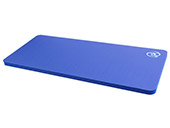

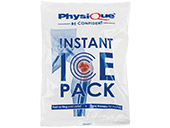
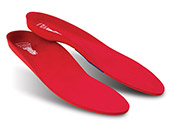
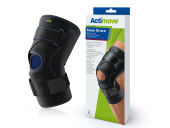
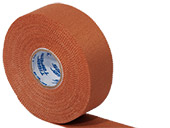
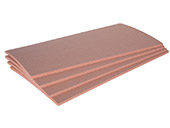
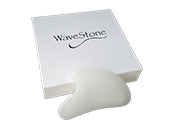
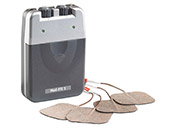

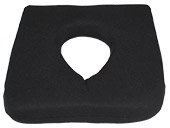
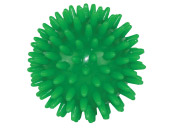
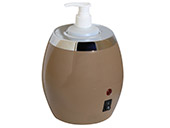


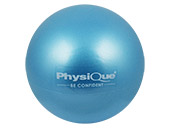
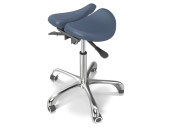
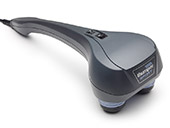
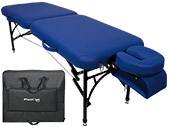
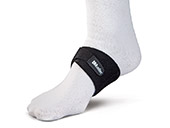

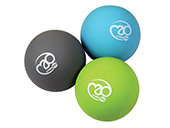
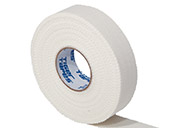
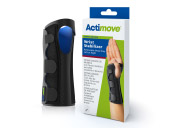
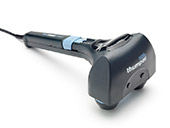
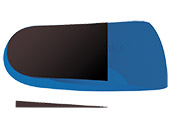
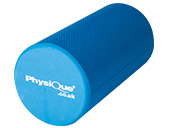
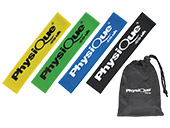

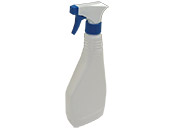


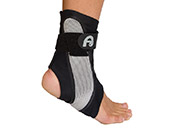
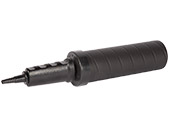
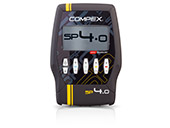
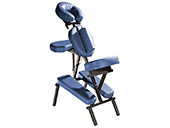
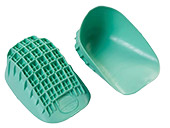

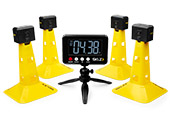
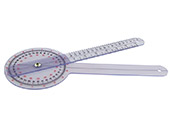
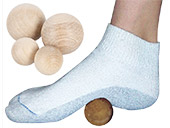


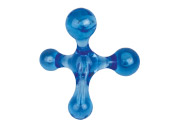
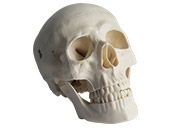

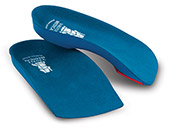
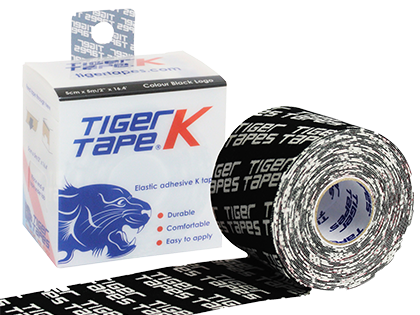
Did you find this article useful?
Why not share this with a colleague, patient or friend?